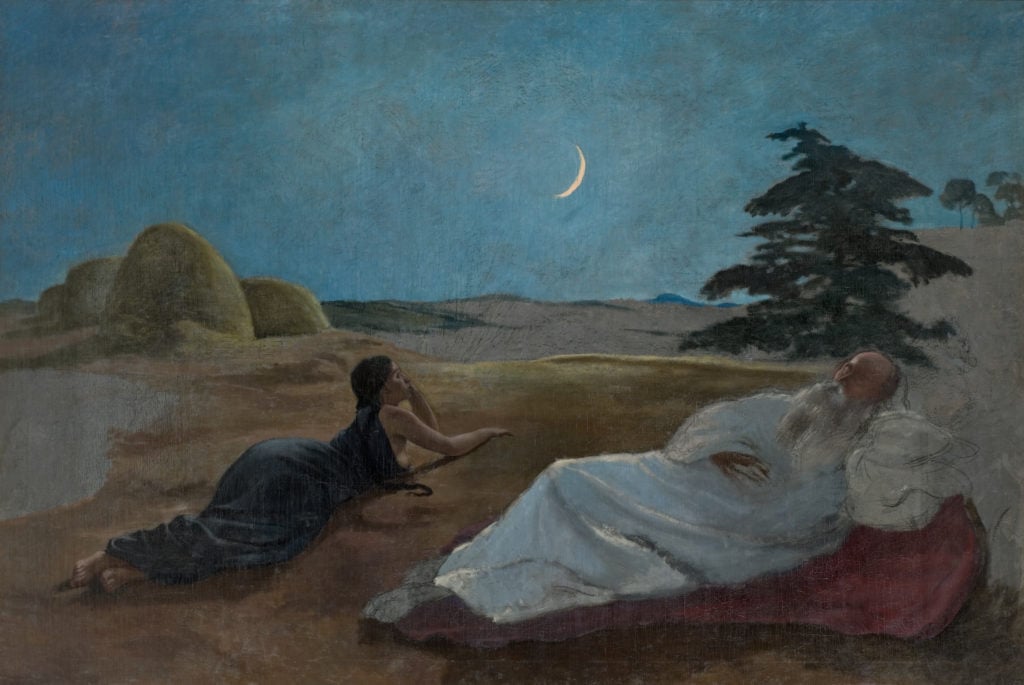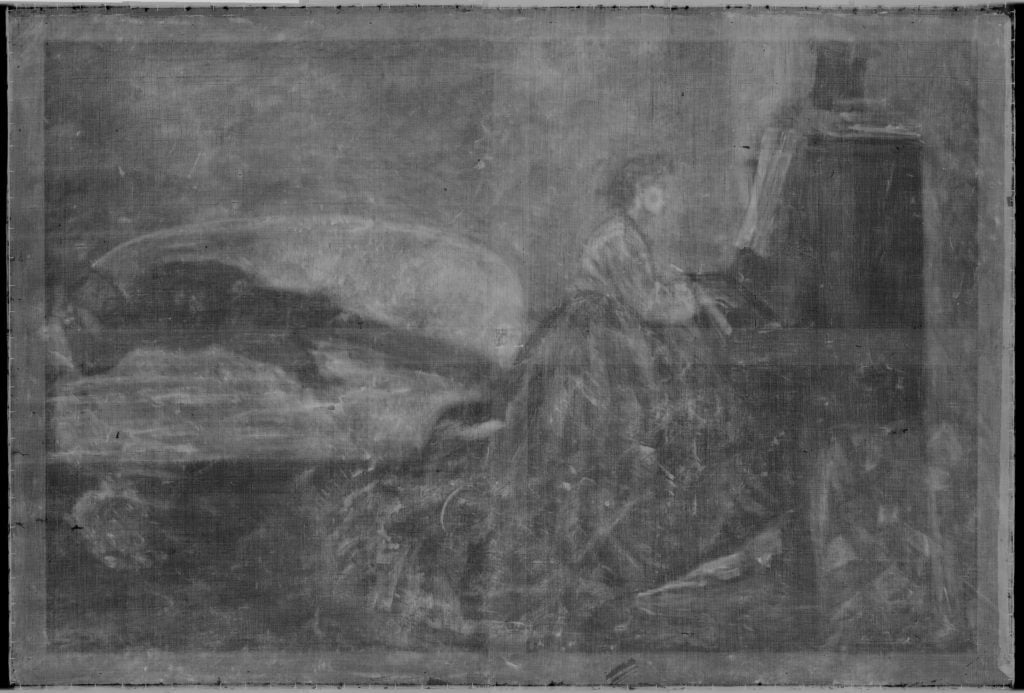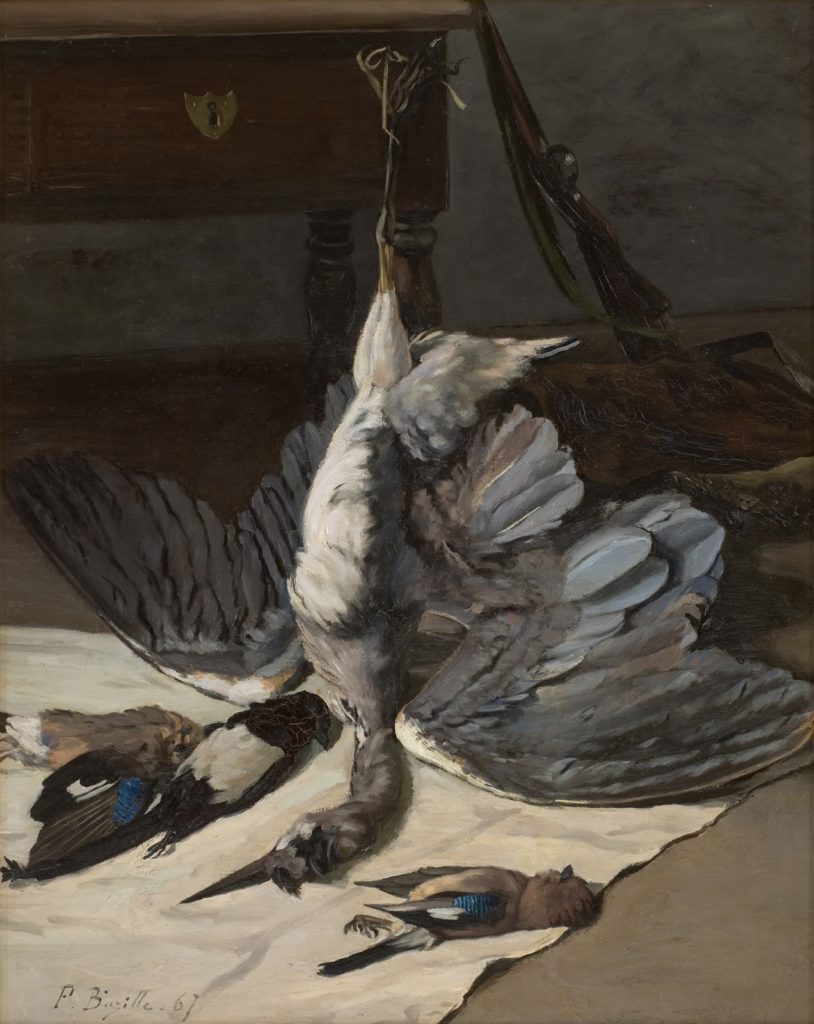Art World
X-Ray Reveals Long-Lost Impressionist Composition Buried Beneath Another Painting
The missing painting is called "Young Woman at the Piano."

The missing painting is called "Young Woman at the Piano."

Sarah Cascone

Turns out X-rays can reveal much more than broken bones. One of Frédéric Bazille’s key works, long thought lost or destroyed, has been rediscovered thanks to X-ray analysis. Young Woman at the Piano, the first work that the young artist submitted to the official Paris Salon, has been found beneath the surface of Ruth and Boaz, covered over by Bazille to create one of his last paintings.
The discovery was made during preparations for “Frédéric Bazille and the Birth of Impressionism,” currently on view at the National Gallery of Art in Washington, DC, and organized in conjunction with the Musée Fabre, Montpellier, France; and the Musée d’Orsay, Paris.
“The X-ray had actually been taken years before, and it was just sitting in the file,” exhibition co-curator Kimberly A. Jones of the National Gallery told artnet News, noting that it was co-curator Paul Perrin of the Musée d’Orsay who determined “not only was there something in the X-ray, he was able to identify what it was.”
Young Woman at the Piano, “the largest and most ambitious work that Bazille had undertaken to date,” according to Dianne Pitman’s Bazille: Purity, Pose, and Painting in the 1860s, was painted in 1866. Ultimately, the canvas was not accepted by the Salon, although Bazille did make his debut there that year with the smaller Still Life with Fish.

X-Ray of Frédéric Bazille, Ruth and Boaz (1870), showing Young Woman at the Piano (1866). Courtesy of Musée Fabre, Montpellier Méditerranée Métropole/© C2RMF/Jean-Louis Bellec.
The whereabouts of Young Woman at the Piano, described in detail by Bazille in letters to his mother, had long remained a mystery. “The terribly difficult part is the woman,” he wrote. “There is a green satin dress, which I hired, and a blonde head that I am really afraid of not doing as well as possible although Courbet complimented me on it when it was just begun.”
“He gives very extensive descriptions of the painting,” said Jones. Based on this correspondence, the curators were familiar with everything from the painting’s subject down to the canvas’s exact height and width, and “the dimensions match up precisely.”
“It’s incredibly exciting,” she added. “This painting that clearly meant so much to him at the time, that he had staked so much of his hard work and reputation… it was there underneath the surface all the time.”
But why would Bazille paint over this composition? “It’s probably a combination of expense—it’s a way of saving money—but also he was dissatisfied; you don’t paint over a composition that you find pleasing, that you considered resolved,” Jones told us. “The fact that it got rejected from the Salon reinforced that maybe it wasn’t as good as it could have been.”

Frédéric Bazille, Still Life with Heron (1867). Courtesy of the Musée Fabre, Montpellier Méditerranée Métropole.
His life cut tragically short by his death in battle, Bazille painted for just seven years, leaving behind a scant 60 known works. As such, any additions to that tiny oeuvre are of huge significance to scholars and art historians. And Young Woman at the Piano is in good company. “In our studies we have so far discovered 11 paintings with hidden compositions,” said Jones. “We’ve only looked at about half of his body of work and we suspect there are still more.”
She called the discoveries “transformative,” noting that “with an artist like this whose body of work is so small and suddenly you have more, it helps you understand” their practice that much better. And while it isn’t uncommon for artists to reuse canvases to create a new work of art, Bazille stands apart in two ways.
“The sheer percentage [of repainted canvases] is extraordinarily unusual,” Jones noted. “I don’t think anyone anticipated we’d find so many.” She is also impressed with the way Bazille went about recycling his canvases, neglecting to apply a base coat over the original work.
“It’s very challenging, what he does, to not cover over the original composition so it’s always visible when he’s reworking the canvas,” Jones explained. “It requires an amazing ability to block out the composition in front of him. Personally, I find it very difficult to imagine how he could transpose an entire new composition over the old one.”
Without close and careful examination of the recycled paintings, “you don’t even realize it, you can’t see it,” she added, noting that while “unusual colors sort of peek through, or there’s a certain patch of impasto, he really hid what he did quite discretely.”

Frédéric Bazille, The Western Ramparts at Aigues-Mortes (1867). Courtesy of the National Gallery of Art, Washington, DC.
Aside from Young Woman at the Piano, researchers have yet to identify any known works by Bazille among the newly discovered hidden compositions. That’s because, said Jones, “looking at things with X-ray and infrared is difficult. It’s hard to tell how finished they were.”
In addition to offering museum visitors a chance to see the X-ray images of Young Woman at the Piano and other repainted canvases, the current exhibition also aims to return Bazille to his rightful place among the French Impressionists.
Bazille began studying medicine in Paris in 1866 at the age 20, but found himself drawn to the arts. He worked alongside Claude Monet, Auguste Renoir, and Alfred Sisley at the Paris studio of Swiss artist Charles Gleyre, abandoning his medical studies two years later.
In August of 1870, Bazille enlisted into the French Army, dying in his very first battle on November 28 of that year. Due to his untimely death, his work was not included in any of the official Impressionist exhibitions. “That’s the only reason he isn’t considered an Impressionist, that he didn’t live long enough to exhibit with them,” said Jones.
“Impressionism doesn’t really begin in 1874,” she added. “The movement, the genesis of it, is rooted in the 1860s, in the camaraderie and friendship of these young painters… Bazille was front and center.”